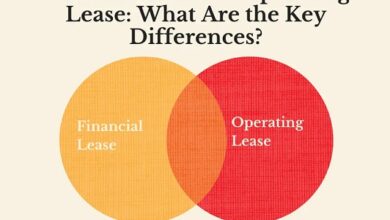Virtual reality recruitment/ Purpose/How to use/Metaverse
Often associated with games, virtual reality (VR ) has the potential to drive the future of work. Recruiting via virtual reality can be a weapon in the talent war at this stage of the Great Resignation. In this article we will provide you Virtual reality recruitment.
Hiring is a science, an art, and sometimes a balancing act. This is a lot like game technique, right? Yes and no. Yes, because it is the action of involving and attracting the candidate to the R&S process and, at each stage, he can move up the recruiting funnel, as well as advance in the gaming world. However, unlike the game universe, where everything is in the fantasy world, the art of hiring uses virtual reality artifices to attract and retain talent for real jobs.
Want to know more about the use of virtual reality in selection processes and how you can adopt the technology? In this article, we’ll show you how VR and the much-heralded Metaverse are shaking up the way companies recruit and hire. We’ll also show you how these new features can benefit contractors and candidates.
Want to experience this parallel world? Fasten your seat belts and join us on this journey!
Virtual reality and HR
For many, virtual reality is reminiscent of images of teenage video game aficionados. “Things of young people who are not yet working”, the most conservative would say. This type of thinking is being overcome with good (and profitable) arguments in favor of the use of technology in the labor market .
The most significant virtual reality applications for humanity go beyond pure entertainment, shaping the future of work. There are numerous virtual reality applications that can fundamentally shape a variety of industries, from healthcare to manufacturing, from media to agribusiness and more.
With HR it is no different. The technology, which is not new — there are indications of its use in the 1930s by the US Air Force — has had an impact on attracting and managing people . Currently, the use of VR by HR basically takes place on two fronts: recruitment and people development.
In the next few paragraphs, we will address the use of technology in attracting and selecting people and its advantages.
Why Use Virtual Reality Recruitment?
Creating a fluid and friendly candidate experience is the key to success in attracting and hiring talent. Studies show that 49% of candidates rejected a job offer due to a poor recruitment process.
That’s why more and more companies are turning to creative solutions to identify and retain the right candidate. In this sense, virtual reality technology is increasingly becoming part of the process, integrating the pool of recruitment and selection tools that help HR.
Tech enthusiasts report that VR recruiting offers a more realistic and immersive experience for potential candidates to interact with the employer brand. Today, recruiters are testing the technology with potential candidates at career fairs and final interviews.
Deutsche Bahn, the German train company, tried the feature at career fairs in Germany to showcase the company’s culture to event attendees. Result: the organization received ten times more applications than in previous years.
Unlike a video call, the immersive experience is often pre-set and automated, which means recruiters can also spend less time on the process. Instead, the recruiter can focus on the potential candidate’s results and ask meaningful questions about their experience.
Recruiters who advocate the use of VR highlight among the immediate benefits of using the technology:
- An immersive interview environment;
- Realistic job role assessments;
- Introduction to company culture.
How can you use Virtual reality in recruiting?
Although the technology has been used for some time for training in hazardous environments – flight simulators are an example of this – companies are betting more on the use of virtual reality these days, as the cost of acquiring this technology is more affordable.
Hardware prices (glasses), which previously surpassed the barrier of three decimal places, can now be found for up to one hundred reais — obviously, the higher cost devices provide more realistic and immersive experiences, but the more affordable alternatives facilitate and expand the use of technology in R&S.
Here are the main applications of VR in recruitment:
Brand Presentation Through Virtual Tour
One of the basic applications of VR in recruitment is the possibility of creating a virtual tour of the office, factories, innovation sectors and other real environments that portray the values or even the history of the company.
The resource offers an inside view of the company, creating the virtual and realistic experience of a visit, which can be lived in person or remotely, both at events for candidates and in video interviews. Experiencing a little of the office atmosphere can help those who work from home understand the company culture.
Creating Test Scenarios
Another useful aspect of virtual reality is the ability to create candidate assessments through gamification. VR technology provides the opportunity for potential candidates to explore whether the open position is right for them.
Creating multiple scenarios also allows recruiters to realistically assess candidate skills.
Highlight The Basic Functionalities Of The Work
Many aspects of a position can be difficult to explain or understand unless directly experienced. Thus, instead of a fully interactive assessment, it is also possible to create realistic day-to-day simulations, with situations that are part of the team’s daily life, for example.
Recruitment in the Metaverse: How does it work?
So far, we have described the possibilities for recruiting through VR technology. However, the question remains regarding the Metaverse: does the emerging technology have any correlation with the use of virtual reality?
There is a lot of confusion when talking about the Metaverse. Some people believe that accessing this virtual environment requires a VR device .
In fact, virtual reality is an arm of the Metaverse and it is possible to log into the digital universe even without the use of VR glasses, in the same way that virtual reality also works in other environments outside the world of games. Of course, the full VR equipment, with the use of goggles and sensor clothing, takes the experience to another level.
What Is The Metaverse?
They are virtual worlds that try to imitate or replicate interactions in the real environment. It is as if you are transported to a parallel reality where the real universe coexists with the virtual universe.
Does it still sound like a science fiction movie to you? Well, know that, in practice, this combination of universes is already a reality – and there are many companies, such as Nike and Facebook, and famous people, Neymar Júnior is one of them, investing in it.
There are even companies that plan (or already do) virtual meetings and selective processes in the Metaverse. The Carrefour group, for example, bought some land in the virtual game and plans to do some job interviews in the environment.




